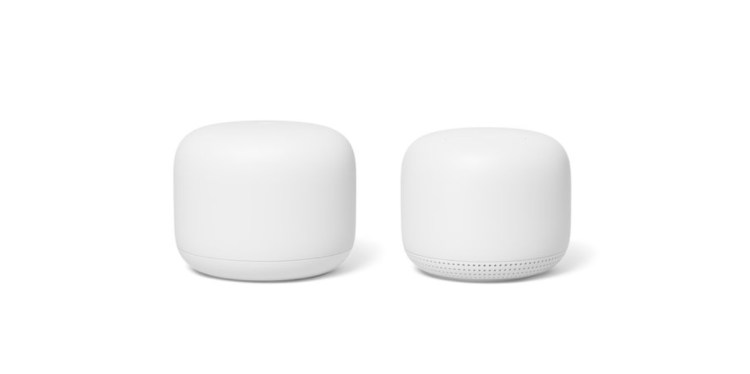testsetset
Although the new Nest Wifi Router and Wifi Point are welcome upgrades to Google’s home wireless network offerings, bringing Google Assistant to a reasonably affordable mesh network, they don’t use Wi-Fi 6. Wi-Fi 6, the mercifully spartan moniker for the 802.11ax standard, holds a great deal of promise for the future of networking, yet Google opted to stick with the prior-generation 802.11ac (Wi-Fi 5) standard.
The omission is by no means a dealbreaker, but it does raise the question as to why Google made that call. VentureBeat asked Chris Chan, Google Nest product manager, to explain.
Chan allowed that a number of Wi-Fi 6 routers already exist in the wild, and noted that it’s a standard that Google is following closely, but he pointed to the balance of cost benefit as the driving factor.
“You do see a lot of routers with Wi-Fi 6 built in, but it charges quite a bit of a premium in order to get that, and in fact, you need to have Wi-Fi 6-compatible other devices in order for it to be a faster experience,” he said. He declined to quote specifics, but said that it would be “hundreds of dollars more expensive” to be Wi-Fi 6-compatible, “for questionable gains in Wi-Fi signal strength.”
June 5th: The AI Audit in NYC
Join us next week in NYC to engage with top executive leaders, delving into strategies for auditing AI models to ensure fairness, optimal performance, and ethical compliance across diverse organizations. Secure your attendance for this exclusive invite-only event.
“Signal strength” isn’t necessarily the greatest selling point of Wi-Fi 6, though; in fact, the Wi-Fi Alliance pitches it as ideal for internet of things (IoT) applications. That would ostensibly make it ideal for smart home devices, which is a market in which Google is obviously deeply invested. Wi-Fi 6 promises speed gains, device power efficiency, and superior handling of multiple devices simultaneously.
But Chan’s larger point is salient: What does Wi-Fi 6 really give users right now, practically speaking, for the added cost? It’s a typical tech chicken-and-egg problem.
Device makers won’t bother upgrading their networking capabilities until there are routers that support them, and router makers have to balance the creation of expensive new gear that may have slow adoption. But there won’t be consumer demand for Wi-Fi 6 routers if there aren’t enough compatible devices. Round and round it goes.
As is usually the case, there will be incremental steps forward on both the chicken and egg fronts, and then there will be a tipping point when the new standard becomes the norm. For Wi-Fi 6 it might not be until 2023 that it goes mainstream, according to IDC. Already, though, Netgear has multiple Wi-Fi 6 routers, Cisco has them for the enterprise, and Qualcomm is invested on the component side. There are more Wi-Fi 6 routers in the wild, too, including offerings from Asus, D-Link, and TP-Link, and popular devices like the iPhone 11 and Samsung Galaxy S10 phones are equipped with Wi-Fi 6.
Google knows this; it just made the decision to wait. “We looked at that ecosystem, and we said hey, maybe one day but not yet. It’s more important that we deliver a ton of value to our users now,” said Chan. “We decided instead to invest in the radios and to ensure that people had great whole-home coverage.” He added that the new two-device mesh Wi-Fi approach Google took with the Nest Wifi Router and Wifi Point offers the same coverage as the original three-pack.
The Nest Wifi Router and Wifi Point will be available, with Wi-Fi 5, on November 4 for $269. You’ll also be able to grab the router and access point separately from one another, for $169 and $99, respectively. A three-pack will cost $349.


